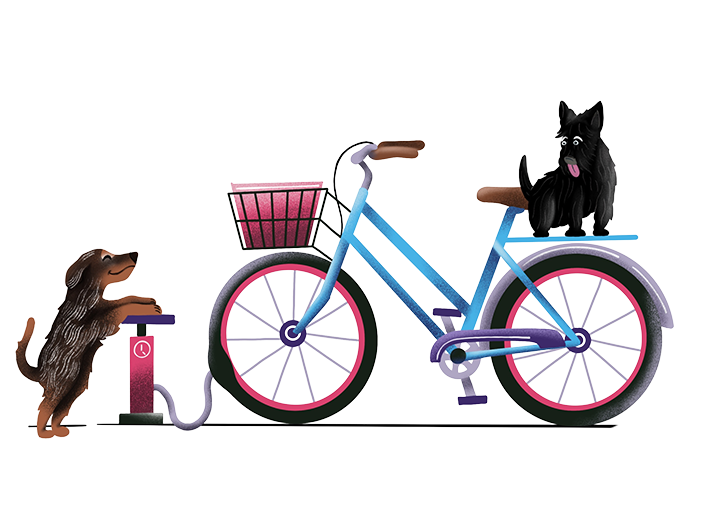Menu

Creating great content can help many organizations in several ways: higher search engine rankings, enhanced social media presence, and better lead generation.
However, you won’t be able to reap these benefits without a proper content marketing strategy. A content marketing plan is essential when hitting your KPIs and ensuring maximum ROIs.
So how can your company create an effective content marketing strategy? Designing an effective B2C content marketing strategy requires setting a goal, understanding your customers, planning content creation, and measuring the results. By working through these steps and building a solid plan for your organization’s content, you will be able to reach your target customers more successfully.
Business to consumer (B2C) marketing allows organizations to promote their products and services directly to consumers through useful and engaging content. Compared with business to business marketing (B2B), the B2C content marketing approach focuses heavily on emotions rather than logic. Allow us to explain.
The problem: People don’t pay attention to advertisements anymore.
In our ad-saturated world, most people simply ignore ad campaigns that don’t add value for them. For savvy modern consumers, there is nothing new to be learned or gained from companies introducing their products to the market.
The solution: Enter B2C content marketing.
Instead of simply promoting a service or a product, B2C marketers utilize content marketing to build good customer relationships. B2C content marketing is a creative, consumer-focused way of presenting content in the form of images, videos, blog articles, podcasts, and other usable content such as templates, eBooks, and free guides.
By capturing consumer attention through interesting hooks, it becomes much easier for your content marketing team to convince potential customers that your company has the product or service they need.
B2C content marketing has steadily become the best online marketing approach over the last few years. Companies that had a headstart on content marketing have already seen the amazing growth with their audience base.
Here are three content marketing success stories to inspire you:
Rip Curl’s content marketing team created a website dedicated to their online publication known as “The Search”. In line with their branding as the ultimate surfing company, The Search features photography and stories from surfers.
The website is a curated archive of videos, articles, images for finding the best waves and enjoying the surfing lifestyle. Tabs are also included to help surfers shop for Rip Curl’s gear. With 2.2 million Facebook followers and 130,000 Youtube subscribers, Rip Curl’s marketing team was able to reach their target niche through high-quality content.
In 1998, McDonald’s released limited-edition Szechuan sauce to promote the film Mulan. This sauce was mentioned on Cartoon Network show Rick and Morty, prompting McDonald’s to re-release the sauce in limited quantities. However, the limited supply angered a lot of fans who weren’t able to get the special sauce.
To apologize for their mistake, McDonald’s produced a three-part investigative podcast called “The Sauce” - their lighthearted take on this series of events. The day after it aired, “The Sauce” entered iTunes’ top-100 podcast chart. McDonald’s was able to pacify the fans through creative content marketing and 20 million additional sauce packets.
Coca-Cola’s “Share A Coke” marketing campaign used personalization to reach out to consumers. By printing the 150 most common names on bottles, consumers everywhere searched for a bottle that bears their name.
Coca-Cola also let consumers customize their own bottles and encouraged them to share stories about soda with friends and families on social media. The result of their innovative marketing tactic? A huge spike in Coke sales, over 500,000 photos with the #ShareaCoke hashtag, and roughly 25 million new Facebook followers for Coca-Cola that year.
The overall goal of B2C content marketing is to capture leads, nurture prospects, and engage with existing customers. While this paints a broad picture of your end goals, you still have to determine specific goals that you want your content marketing to achieve.
A well-defined B2C content marketing plan will always include what you want your customers to do after watching one video or reading through all your blog posts. There are five common goals of B2C content marketing:
Whether you are new to marketing or are a seasoned marketer, identifying your target audience is key to crafting relevant content. This target audience is also called a “buyer persona” - the representation of your ideal customer defined by their buying habits, preferences, and behavior.
By placing yourself in your buyer persona’s shoes, you can produce valuable content that people actually want to read. Conducting market research yearly will help you revisit your audience parameters, in case you wish to target a new group of customers or expand your current audience.
Once you have a buyer persona in mind, there are three things you should try to uncover: their emotions, the right timing, and the solutions they are looking for.
Emotions have a large impact on individual decision-making - but were you aware that the right emotional words can encourage prospects to do business with you? When you tap into your consumers’ good feelings, you create positive connections between your organization and your audience. Make sure to craft your B2C content around how your business can meet consumers’ expectations and appeal to their feelings.
Wrong timing may lead you to miss key opportunities or let your competitors reach your prospects first. Having information isn’t the only important thing - you also need to know when is the right time to share it. Research shows us that people spend more time on social media on Wednesdays and the weekends, while more people check their email on Thursdays over other days of the week.
Monitor the days and the hours that people engage with your content to optimize your publishing schedule. You can also tailor B2C content around specific holidays. Even though most of your content should be relevant year-round, it doesn’t hurt to have special, celebration-specific posts.
Every consumer on the internet is looking for solutions to their problems, so your task is to become their go-to solution provider. However, you can’t do that until you figure out what your target audience wants and why they visit certain sites. The trick is to dig through the keywords your target audience is using. Keywords will give you insights on exactly what customers are looking for.
Once you have a good idea of who your target audience is, you can finally begin to brainstorm ideas. Aside from thinking of content topics that will excite your target audience, you also need to consider what format and which channels you want to use. Finally, your team also has to agree on how the content will be managed.
If you have already decided on the topics you want to tackle, you will have to determine which format can best convey your company’s take on these subjects. There are a variety of options for this: blog posts, videos, podcasts, eBooks, case studies, white papers, infographics, social media posts and more. Sky’s the limit when it comes to how creative you can be.
There are also several choices on where to publish your content. Your own website and blog are the ideal picks, but you can complement these with social media. Facebook, Twitter, Youtube, Instagram are just some of the many platforms available to you. Don’t be afraid to experiment or think outside the box - your messaging and brand identity become a lot stronger by publishing through multiple channels.
Your team has to figure out who will create your content, who will publish it, where will it be published, and when will it go live. One way you can easily manage content is by filling up an editorial calendar. This helps ensure that you have a well-balanced and diverse content collection. A social media calendar can also keep track of when you should promote and manage content on social platforms.
The last step in designing a content marketing strategy is implementing metrics to track your progress. Although it may feel like your work is done once you publish your content, marketing strategies are a different matter altogether.
The market is a living thing: it grows and it evolves, so even the most perfectly executed marketing plan will need to be refined. Measuring the numbers of your campaign is the only way to monitor if it actually worked. Some simple metrics you can utilize are:
The number of digital content published daily is always growing, so every brand that wants their content to succeed has to work creatively. When there is so much competition for your target audience’s attention, how can you help your content marketing stand out?
Here are six elements you can include in your content marketing efforts that will help keep the spotlight on your brand:
Content marketing should be able to capture the essence of your brand’s identity and the message you want to communicate. Every detail matters: the mission, vision, brand colors, logo, typography, brand values, and storytelling style come together to convey what your organization can uniquely offer. You have to maintain a coherent brand identity across your various platforms and social media accounts.
It’s not enough to build your website or write a blog article and call it a day. Your brand has to appeal to the visual side of your consumers: engaging colors, readable fonts, a navigable layout, images or videos should complete your content. Design serves to hook your audience; the content itself reels them in.
If you have ever scrolled through a website that didn’t function as it should, you would understand how frustrating it can be. Visitors can form their impression of your website in as little as 50 milliseconds. If your content isn’t working properly, then you may have lost the opportunity to engage with a customer - or worse, have them walk away with a negative impression of your business. Be sure to offer your content in multiple formats as well, so your audience has several options to choose from.
The word “community” gets thrown around a lot of content marketers for a good reason: Your content should inspire the consumers not only to interact with your organization, but to engage with like-minded individuals as well. Forums, comment boards, sub-sections, and other spaces that promote user-generated content will help you create a dynamic, tight-knit community of loyal consumers.
Your diverse target audience probably has a broad range of needs and interests - so why not tap into that? If your aim is to sell women’s clothing, it would be pretty difficult to approach the general 18-25 year old public. Instead, you can explore specific segments such as expectant working women. Maybe you can film a vlog that shows them how to dress comfortably for the office as they begin to show. Effective content marketing requires you to assess what your niche needs and to provide them that content experience.
People love stories - which is why they remember brands that tell stories. If the story you’re telling connects emotionally with your audience, then you can bridge the gap between consumer and producer. Aside from engaging with consumers, storytelling is also an effective brand-building tool. Center your content marketing around your brand’s values, advocacies, and work with larger communities to help consumers understand what your organization is all about.
